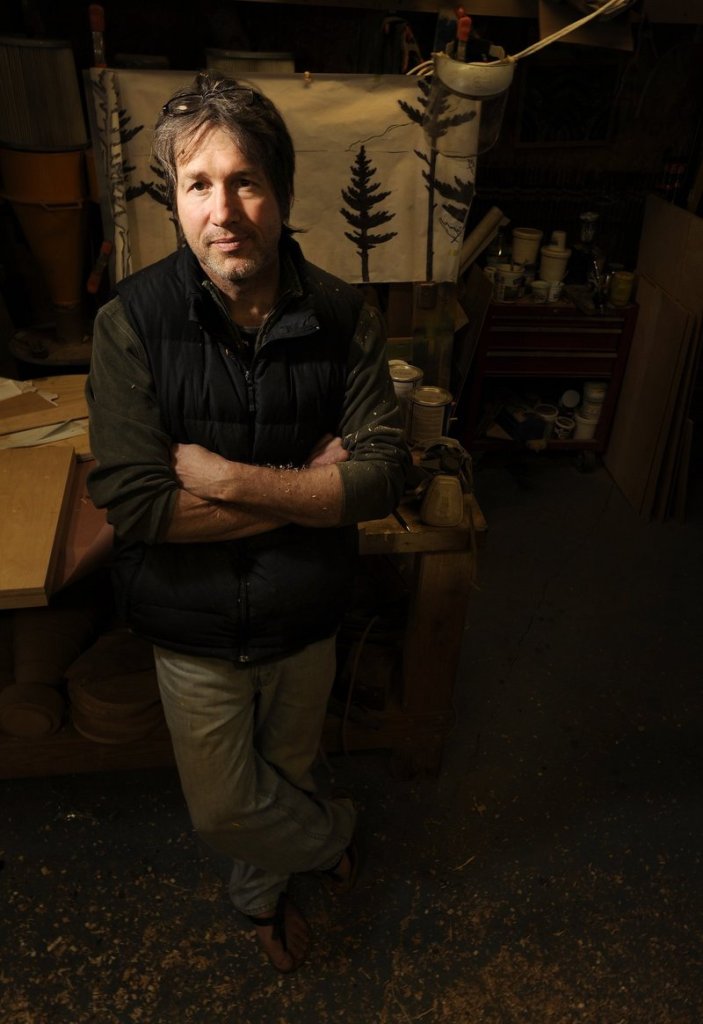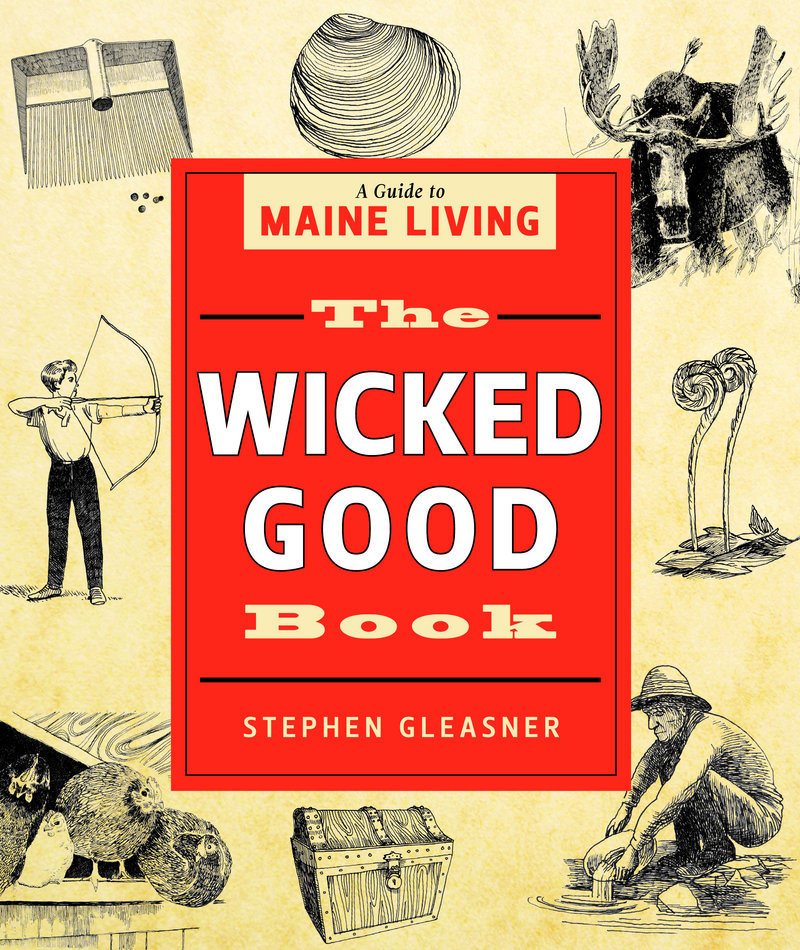There are many ways to experience what it’s like to live in Maine.
For most people, cutting a hole through the ice on a frozen pond and jumping in wouldn’t be one of them.
But it was for Stephen Gleasner, as he spent time doing quirky and interesting “research” for his new book, “The Wicked Good Book: A Guide to Maine Living” (Down East, $24.95).
The book is a partly practical, partly nostalgic and often quirky look at a whole lot of experiences one can have or things one can find in Maine. The possibility of falling through the ice in Maine in winter is a very real one, so for his chapter “How to Survive a Fall Through Ice,” Gleasner decided he needed to personally experience what it’s like, so he cut a hole in the ice and jumped in.
He was secured to a rope and had help nearby.
In his book, which came out in September, there are chapters ranging in topic from clam digging, moose defense and panning for gold, as well as making a fire from scratch, skipping stones, and books “every Mainer should read.” There are 35 chapters in all, including chapters on Maine’s roller derby scene and go-cart racing.
Gleasner, 50, lives in the small midcoast town of Appleton and works primarily as an artist creating pieces with plywood. This is his first book.
Q: Where did this idea come from and what sort of research did you have to do?
A: It was a loosely envisioned project proposed by Down East. So I sent them some samples of my writing, and I got to do the book. I’ve lived in rural Maine for about 12 years and I realized, after I began this, that I had been amassing experiences that would help in the book.
My kids were 10 and 7 at the time, so they helped on the research. Some of it was stupid stuff like cutting a hole in the ice so I could feel what it’s like to be in freezing water. Some were “who knew?” moments like the chapter on panning for gold. Who knew you could pan for gold in Maine? But apparently people had. So we panned for gold near Lincolnville, and in Coos Canyon. We didn’t get anything, but we really enjoyed the process.
When I went out clamming I found the experience bordering on frightening. My daughter weighs 40 pounds and she kept getting stuck. I kept thinking we were all going to tip over and land face first in the mud.
Q: Did you have a favorite thing you did for the book?
A: My little girl is very quiet and gentle. Going to the roller derby with her was pretty neat. So was go-cart racing. I was given a pretty long rope to do this book, so I did some things that were just interesting to me. I didn’t want it to be just a survival guide.
Q: How did you stage your plunge through the ice?
A: I cut a 6-foot hole in the ice. I used my chain saw. I had a friend tie a strap to me, and I went in. I wanted to experience it. One of the things you find right away is that you get a cold shock, and the reflex makes you gasp. But you have to realize that’s OK, that’s going to happen. Don’t add that to your panic. Basically keep your head above the water and go back where you came from. You know there was ice back there that supported your weight, that’s how you got there. So keep your head and get back there.
And if you get to the point where you don’t have the strength to get yourself out, put as much of your arms on the ice as you can and lie still. That way, your arms will freeze to the ice. So if you pass out, you’re still up on the ice and someone can pull you out.
Q: What do you hope people get out of this book?
A: I hope they get a surprise out of it. If you can get one thing — something to pursue, something that might make you more efficient, a different way of looking at something — I’ll be glad. Maybe you’ve lived in Maine a long time and have not thought about seeing a roller derby. … Maybe someone hadn’t thought about gold panning before. Just one or two useful things you might remember from the book — like freezing your arms to the ice — might come in handy some day.
Staff Writer Ray Routhier can be contacted at 791-6454 or at:
rrouthier@pressherald.com
Send questions/comments to the editors.




